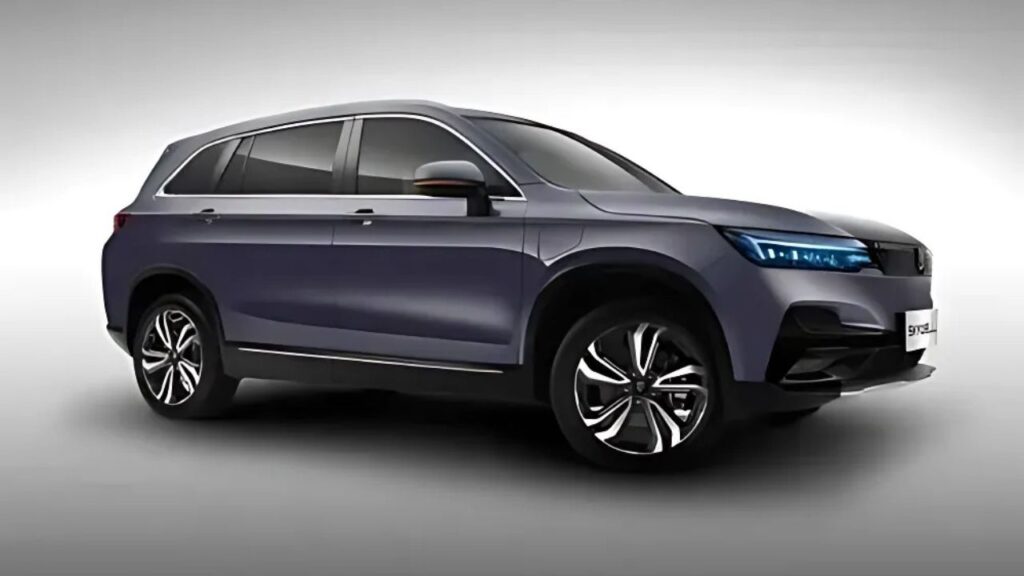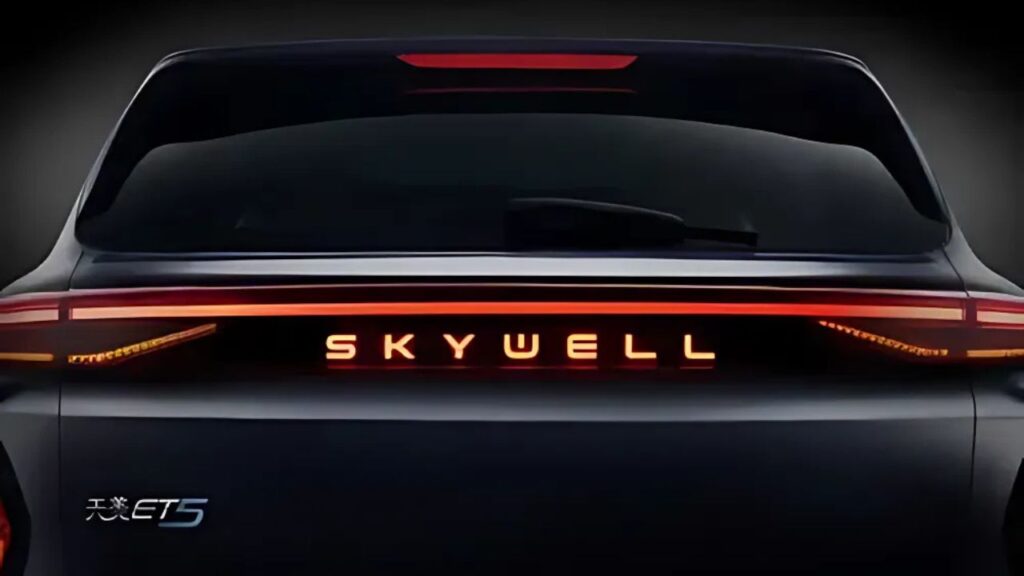Australia’s electric vehicle revolution is gaining momentum with another affordable option. The Skywell ET5 electric SUV promises to break the $50,000 barrier while delivering genuine electric mobility.
This Chinese manufacturer isn’t trying to compete on luxury or performance. Instead, they’re focusing on practical electric transportation at accessible prices.

Affordable Electric Mobility
Pricing Strategy
Skywell’s approach to the Australian market centers on value-conscious consumers. The ET5’s sub-$50K pricing makes electric vehicles accessible to mainstream buyers.
This price point represents a significant breakthrough for family-sized electric SUVs. Previously, similar vehicles commanded premium pricing well above average household budgets.
Government incentives and rebates can reduce the effective purchase price further. These programs make the ET5 even more attractive to cost-conscious buyers.
Value Proposition
The ET5 delivers essential electric vehicle benefits without premium pricing. Daily commuting costs drop dramatically compared to conventional vehicles.
Maintenance requirements are minimal compared to internal combustion engines. Electric motors have fewer moving parts and require less frequent servicing.
Home charging convenience eliminates most traditional fueling routines. Owners can wake up each morning with a fully charged vehicle.
Design and Practicality
Exterior Styling
The ET5’s design language emphasizes functionality over flashy aesthetics. Clean lines and practical proportions create an appealing but unpretentious appearance.
Aerodynamic efficiency was clearly prioritized during development. The vehicle’s shape contributes significantly to its respectable range figures.
LED lighting technology provides excellent visibility while maintaining energy efficiency. Modern lighting signatures give the ET5 a contemporary appearance.
Interior Space
Cabin design maximizes usable space within the vehicle’s overall dimensions. Intelligent packaging ensures passengers don’t feel cramped despite the affordable pricing.
Storage solutions throughout the interior accommodate family needs effectively. Cup holders, door pockets, and console storage provide practical convenience.
Seating comfort exceeds expectations for vehicles in this price range. Supportive cushions and adjustable positions ensure comfort during longer journeys.
Cargo Capacity
The ET5’s cargo area provides generous space for family activities. Weekend trips and grocery shopping are easily accommodated.
Split-folding rear seats expand cargo capacity when needed. The flat load floor makes loading and unloading easier with bulky items.
Underfloor storage compartments house charging cables and tools. These spaces keep essential items organized and easily accessible.
Electric Performance
Battery Technology
Skywell employs proven lithium iron phosphate battery chemistry. This technology provides excellent longevity and safety characteristics at reasonable cost.
Range estimates place the ET5 at approximately 350-380 kilometers under optimal conditions. Real-world performance typically achieves 300-320 kilometers.
Battery thermal management systems protect cells from extreme temperature damage. These systems ensure consistent performance across Australia’s diverse climate conditions.
Charging Capabilities
DC fast charging support enables convenient energy replenishment during longer trips. The ET5 accepts up to 80kW charging rates at compatible stations.
Home charging through standard AC outlets provides overnight convenience. A full charge typically requires 8-10 hours using household power supplies.
Charging port placement considers daily usability and cable management. The location minimizes interference with normal parking and loading activities.
Driving Dynamics
Electric motor placement provides balanced weight distribution characteristics. The low center of gravity enhances stability during normal driving conditions.
Regenerative braking systems can be adjusted to suit individual preferences. Stronger settings maximize energy recovery while lighter settings feel more natural.
Multiple driving modes alter power delivery and system responses. Eco mode maximizes range while Normal mode balances efficiency with performance.
Technology Features
Infotainment Systems
The ET5’s infotainment platform emphasizes simplicity and functionality. Response times are adequate, and menu structures remain intuitive for users of all ages.
Smartphone connectivity supports both Apple CarPlay and Android Auto integration. Wireless connection options eliminate the need for cable management during daily use.
Voice recognition systems understand basic commands effectively. The system can control audio, navigation, and climate functions through spoken instructions.
Safety Technology
Standard safety equipment includes automatic emergency braking and lane departure warning. These systems provide essential protection at the vehicle’s price point.
Blind spot monitoring alerts drivers to vehicles in adjacent lanes. Visual and audible warnings help prevent dangerous lane change maneuvers.
Rear cross-traffic alert assists with backing out of parking spaces. The system detects approaching vehicles that may not be visible to drivers.
Driver Assistance
Adaptive cruise control maintains safe following distances automatically. The system works effectively in stop-and-go traffic situations.
Lane keeping assistance provides gentle steering corrections when needed. The system helps prevent unintentional lane departures on highway drives.
Parking sensors and rear camera systems assist with maneuvering in tight spaces. Clear visual displays make parking easier and safer.
Australian Market Context
Consumer Demand Trends
Australian buyers are increasingly interested in electric vehicle options. Rising fuel costs and environmental awareness drive this growing demand.
Price sensitivity remains a significant factor in purchase decisions. The ET5’s affordable positioning addresses this crucial market requirement.
Family-focused buyers prioritize practicality over luxury features. The ET5’s emphasis on space and functionality aligns with these preferences.
Infrastructure Development
Charging infrastructure expansion continues across Australia’s major cities. Public charging networks are becoming more accessible and reliable.
Home charging solutions are becoming more affordable and easier to install. Many Australian homes can accommodate basic charging setups effectively.
Workplace charging programs are expanding as employers recognize employee interest. These programs provide convenient charging options during work hours.
Competitive Analysis
Price Comparison
The ET5’s sub-$50K pricing creates a significant competitive advantage. Most electric SUVs in Australia cost substantially more than this threshold.
Traditional internal combustion vehicles in similar size categories often cost more. The ET5’s pricing makes electric vehicles cost-competitive with conventional options.
Total cost of ownership calculations favor the ET5 significantly. Lower fuel and maintenance costs provide ongoing savings throughout ownership.
Feature Comparison
Standard equipment levels in the ET5 compare favorably with higher-priced alternatives. Essential features come included rather than as expensive options.
Technology integration meets modern expectations without overwhelming users. The balance between features and simplicity appeals to mainstream buyers.
Warranty coverage provides confidence in the vehicle’s reliability. Comprehensive protection covers major components for extended periods.
Manufacturing and Quality
Production Standards
Skywell’s manufacturing facilities employ modern quality control measures. Automated systems ensure consistent build quality across all vehicles.
Supplier relationships emphasize reliability over lowest-cost sourcing. Critical components are sourced from established automotive industry suppliers.
Continuous improvement programs address issues quickly as they arise. Customer feedback drives engineering refinements and manufacturing updates.
Quality Assurance
Pre-delivery inspection processes verify each vehicle meets specifications. Multiple checkpoints ensure problems are identified and corrected before delivery.
Material selection balances cost considerations with durability requirements. Interior and exterior components are chosen for longevity under Australian conditions.
Corrosion protection receives appropriate attention for coastal environments. Multiple coating layers protect against salt air and moisture damage.
Ownership Experience
Service Network
Skywell is establishing service centers in major Australian population centers. Initial coverage focuses on areas with highest electric vehicle adoption rates.
Mobile service options supplement fixed locations where appropriate. Technicians can perform routine maintenance at customer locations.
Parts availability emphasizes commonly needed service items. Inventory management ensures minimal downtime for routine maintenance needs.
Warranty Coverage
Comprehensive warranty protection covers major vehicle systems. Battery coverage extends for eight years or 160,000 kilometers.
Service intervals are longer than conventional vehicles typically require. Electric powertrains need less frequent attention than internal combustion engines.
Customer support programs provide assistance with charging and operation questions. New electric vehicle owners receive guidance for optimal usage.
Environmental Impact
Emissions Reduction
The ET5’s zero local emissions contribute to improved urban air quality. This benefit becomes more significant as electric vehicle adoption increases.
Lifecycle emissions analysis depends on electricity generation sources. Australia’s increasing renewable energy capacity improves the overall environmental equation.
Manufacturing emissions are offset through operational efficiency over the vehicle’s lifespan. Total environmental impact remains favorable compared to conventional alternatives.
Sustainability Initiatives
Battery recycling programs ensure responsible end-of-life handling. Skywell participates in industry initiatives for sustainable battery disposal.
Vehicle components are designed with recyclability considerations. Material selection prioritizes substances that can be recovered and reused effectively.
Packaging and shipping materials use environmentally friendly options where possible. These efforts reduce the overall environmental footprint of vehicle delivery.
Market Positioning Strategy
Target Demographics
Primary customers include budget-conscious families seeking practical electric transportation. These buyers prioritize value and functionality over luxury features.
First-time electric vehicle buyers represent a significant opportunity. The ET5’s approachable pricing reduces barriers to electric vehicle adoption.
Urban commuters benefit most from electric vehicle advantages. Daily driving patterns in cities suit electric vehicles particularly well.
Marketing Approach
Skywell’s marketing emphasizes practical benefits over emotional appeals. Cost savings and environmental benefits form the core messaging strategy.
Educational content helps potential buyers understand electric vehicle ownership. Many consumers need guidance about charging, maintenance, and operation.
Demonstration programs allow potential buyers to experience electric driving firsthand. Test drives often convert skeptical buyers into electric vehicle advocates.
Future Outlook
Product Development
Future ET5 variants may include extended-range options for buyers needing additional capability. Battery technology improvements will enable longer-range versions.
Interior and exterior updates will keep the vehicle current with evolving consumer preferences. Regular refreshes maintain competitive appeal over time.
Technology updates through over-the-air systems will add new features. This capability keeps vehicles current without requiring physical modifications.
Market Expansion
Success in Australia could drive expansion to other similar markets. New Zealand and other Asia-Pacific regions represent logical next steps.
Production volume increases will enable further cost reductions. Economies of scale could make even more affordable pricing possible.
Partnership opportunities with energy companies could enhance the ownership experience. Bundled charging plans might provide additional value to customers.
Purchase Considerations
Financing Options
Various financing programs make the ET5 accessible to more buyers. Traditional loans, leases, and rent-to-own options accommodate different financial situations.
Government incentives can significantly reduce effective purchase costs. Federal and state programs provide substantial savings for eligible buyers.
Insurance costs for electric vehicles are often lower than conventional alternatives. Reduced fire risk and theft rates contribute to lower premiums.
Ownership Costs
Electricity costs for charging remain significantly lower than gasoline expenses. Home charging rates make daily operation very affordable.
Maintenance requirements are minimal compared to conventional vehicles. Electric motors have fewer wearing parts and longer service intervals.
Resale values for electric vehicles are improving as market acceptance grows. The ET5’s practical positioning may help maintain value over time.
Regional Considerations
Climate Adaptation
The ET5’s battery thermal management systems handle Australia’s diverse climate conditions effectively. Hot summers and cold winters don’t significantly impact performance.
Air conditioning usage does affect range during extreme weather. Energy-efficient climate control systems minimize this impact.
Coastal environments require enhanced corrosion protection measures. The ET5’s design accounts for salt air exposure common in Australian coastal areas.
Infrastructure Compatibility
Charging port standards ensure compatibility with Australian charging networks. The ET5 works with existing infrastructure without requiring adapters.
Home charging installations are straightforward for most Australian homes. Standard electrical systems can accommodate basic charging requirements.
Remote area travel requires careful planning due to charging infrastructure limitations. Range planning becomes more important for rural journeys.
Market Transformation Impact
Accessibility Revolution
The ET5’s sub-$50K pricing represents a watershed moment for Australian electric vehicle adoption. Previously, family-sized electric SUVs remained financially out of reach for average households.
This price breakthrough eliminates the primary barrier preventing mainstream electric vehicle adoption. Working families can now access electric mobility without stretching budgets beyond reasonable limits.
Government incentive programs amplify the affordability advantage significantly. Combined federal and state rebates can reduce effective purchase prices by thousands of dollars.
Consumer Behavior Shift
Purchase decisions increasingly prioritize practical benefits over brand prestige. The ET5’s value proposition appeals to rational buyers seeking transportation solutions rather than status symbols.
Environmental consciousness influences vehicle choices across all economic segments. Budget-conscious buyers no longer must compromise their values due to price constraints.
Technology expectations remain high regardless of price point. The ET5 delivers modern connectivity and safety features that buyers consider essential requirements.
Manufacturing Excellence Analysis
Production Efficiency
Skywell’s manufacturing approach emphasizes efficiency without compromising quality standards. Streamlined production processes enable competitive pricing while maintaining acceptable build quality.
Automated assembly systems ensure consistent quality across all vehicles. Robotic precision reduces variability that could compromise customer satisfaction.
Quality control checkpoints throughout production identify and correct issues before customer delivery. Multiple inspection stages verify component installation and function.
Cost Management Strategies
Strategic supplier relationships balance cost control with quality requirements. Long-term partnerships provide stability while enabling volume-based pricing advantages.
Component standardization across multiple vehicle models reduces manufacturing complexity. Shared parts bins lower procurement costs and simplify inventory management.
Lean manufacturing principles minimize waste while maximizing production flexibility. Continuous improvement programs identify and eliminate inefficiencies throughout operations.
Technology Integration Deep Dive
Infotainment Capabilities
The ET5’s technology platform prioritizes user-friendly operation over complex features. Interface design emphasizes intuitive navigation and quick response times.
Smartphone integration works seamlessly across multiple device types and operating systems. Wireless connectivity eliminates cable management hassles during daily use.
Software updates through over-the-air systems add new capabilities regularly. This approach keeps vehicles current throughout their service lives.
Safety Technology Implementation
Standard safety equipment includes features often optional on higher-priced vehicles. Automatic emergency braking, lane departure warning, and blind spot monitoring come included.
Camera systems provide comprehensive visibility around the vehicle perimeter. Multiple angles assist with parking and maneuvering in tight spaces.
Electronic stability systems help maintain control during challenging driving conditions. These systems work automatically without requiring driver intervention.
Australian Market Context Analysis
Economic Factors
Australian household budgets face pressure from rising costs across multiple categories. Housing, energy, and living expenses limit available funds for vehicle purchases.
The ET5’s pricing aligns with household financial realities while providing electric vehicle benefits. Operational savings from reduced fuel costs provide ongoing budget relief.
Financing options make electric vehicles accessible to buyers who cannot afford cash purchases. Competitive interest rates and extended terms improve monthly payment affordability.
Infrastructure Development
Charging infrastructure expansion continues across metropolitan and regional areas. Public charging networks provide confidence for buyers concerned about range limitations.
Home charging solutions become more accessible and affordable. Installation costs continue declining as technology matures and competition increases.
Workplace charging programs provide convenient energy replenishment during work hours. Employer sustainability initiatives support electric vehicle adoption among employees.
Competitive Landscape Evolution
Market Positioning
The ET5 occupies a unique position in the Australian electric vehicle market. Few competitors offer similar space and capability at comparable price points.
Traditional internal combustion vehicles in similar categories often cost more than the ET5. Electric vehicle pricing becomes competitive with conventional alternatives.
Import brands face challenges establishing service networks and customer confidence. The ET5’s success depends heavily on execution of customer support programs.
Established Brand Response
Traditional manufacturers must reconsider pricing strategies in response to affordable electric alternatives. Premium positioning requires stronger justification when value options exist.
Product development acceleration focuses on cost reduction without compromising essential features. Engineering priorities shift toward efficiency and value optimization.
Marketing messages emphasize brand heritage and service network advantages. Established manufacturers leverage their reputation to justify price premiums.
Consumer Adoption Patterns
Early Adopter Characteristics
Initial ET5 buyers likely include environmentally conscious consumers seeking practical electric transportation. These customers prioritize function over luxury features.
Budget-conscious families represent a significant portion of the target market. The ET5’s space and efficiency appeal to household transportation needs.
Fleet operators may adopt the ET5 for commercial applications. Lower operating costs provide compelling economic benefits for business use.
Ownership Experience Factors
Daily driving patterns in Australian cities suit electric vehicles particularly well. Short commutes and urban travel maximize electric vehicle advantages.
Range anxiety concerns diminish as charging infrastructure expands and experience grows. Real-world use demonstrates that most trips fall well within electric vehicle capabilities.
Social influences through peer networks accelerate acceptance and adoption. Positive ownership experiences encourage others to consider electric vehicles.
Economic Impact Assessment
Local Economic Benefits
Vehicle imports create employment opportunities in distribution, sales, and service sectors. Dealer networks require staff for sales, service, and administrative functions.
Service center establishment generates construction and ongoing employment. Electric vehicle maintenance requires specialized training and equipment.
Parts distribution networks create logistics and warehousing opportunities. Local suppliers may benefit from component localization possibilities.
Household Economic Effects
Electricity costs for vehicle charging remain significantly lower than gasoline expenses. Daily operating costs decrease substantially for most users.
Maintenance requirements for electric vehicles are reduced compared to conventional alternatives. Fewer wearing parts and longer service intervals save money.
Insurance costs may be lower for electric vehicles due to safety features and lower theft rates. Premium reductions provide additional ownership cost benefits.
Environmental Considerations
Emissions Impact
The ET5’s zero local emissions contribute to improved urban air quality. This benefit increases as electric vehicle adoption rates grow.
Lifecycle emissions depend on electricity generation sources throughout Australia. Increasing renewable energy capacity improves the overall environmental equation.
Manufacturing emissions are offset through operational efficiency over the vehicle’s lifespan. Total environmental impact remains favorable compared to conventional vehicles.
Sustainability Initiatives
Battery recycling programs ensure responsible end-of-life handling. Industry initiatives address environmental concerns about battery disposal.
Vehicle design considers recyclability of components and materials. Circular economy principles influence manufacturing and design decisions.
Packaging and shipping materials use environmentally friendly options where possible. Transportation and logistics minimize environmental impact.
Future Market Prospects
Sales Projections
Conservative estimates suggest strong initial reception for the ET5 in Australia. Value positioning should appeal to mainstream buyers seeking electric alternatives.
Market share capture depends on execution of pricing, quality, and service strategies. Customer satisfaction with early vehicles influences longer-term success.
Word-of-mouth recommendations significantly impact sales in the electric vehicle market. Positive ownership experiences drive referrals and repeat purchases.
Product Evolution
Future ET5 variants may include extended-range options for buyers needing additional capability. Battery technology improvements will enable longer-range versions.
Interior and exterior updates will maintain competitive appeal over time. Regular design refreshes keep vehicles current with evolving preferences.
Technology upgrades through software updates add new capabilities. This approach maintains vehicle relevance throughout ownership periods.
Regulatory Environment Impact
Government Support Programs
Federal electric vehicle incentives significantly improve affordability. Tax benefits and direct rebates reduce effective purchase prices substantially.
State-level programs provide additional benefits beyond federal support. Registration discounts, toll exemptions, and parking privileges add value.
Infrastructure funding supports charging network expansion. Public investment accelerates private sector charging station deployment.
Safety and Quality Standards

Import regulations ensure vehicles meet Australian safety and quality requirements. Compliance costs are factored into pricing and market entry strategies.
Ongoing quality monitoring protects consumers from substandard vehicles. Regulatory oversight maintains minimum acceptable standards for all imports.
Emissions regulations favor electric vehicles over conventional alternatives. Tightening standards make electric vehicles increasingly attractive.
Long-term Industry Implications
Market Structure Changes
The ET5’s success could encourage other manufacturers to prioritize affordability over premium positioning. Competitive pressure may drive industry-wide pricing evolution.
Traditional automotive business models face challenges from value-focused alternatives. Profit margins and volume strategies require reconsideration.
Customer loyalty patterns may shift toward value-based decision making. Brand heritage becomes less influential when practical alternatives exist.
Technology Democratization
Advanced electric vehicle technology becomes accessible to mainstream buyers. Features once reserved for luxury vehicles reach broader market segments.
Innovation acceleration benefits all market participants. Competitive pressure drives continuous improvement and cost reduction efforts.
Manufacturing efficiency improvements spread throughout the industry. Best practices developed for affordable vehicles influence premium segments.
Frequently Asked Questions
Q: What is the actual driving range of the Skywell ET5?
The ET5 typically achieves 300-320 kilometers of real-world driving range under normal Australian conditions, making it suitable for most daily driving needs and weekend trips.
Q: How long does it take to charge the Skywell ET5?
Home charging takes 8-10 hours for a full charge using standard household power, while DC fast charging can reach 80% capacity in approximately 60 minutes at compatible stations.
Q: What warranty coverage does Skywell provide in Australia?
Skywell offers comprehensive vehicle warranty plus 8-year/160,000-kilometer battery coverage with established service network support and mobile service options.

